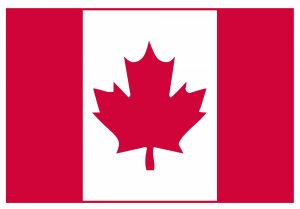 2019 is the year that the Millennials, or Generation Y as they are sometimes referred to, will overtake the Baby Boomers. Their numbers will top 73 million while we see the Baby Boomer population in the US decreases to 72 Million. Those staggering realities have far reaching impacts across consumption trends, housing and employment, just to name a few. It is less about being classified as the generation who wants to know “what’s in it for me” than about the impact their shear numbers will have on shaping our economy.
2019 is the year that the Millennials, or Generation Y as they are sometimes referred to, will overtake the Baby Boomers. Their numbers will top 73 million while we see the Baby Boomer population in the US decreases to 72 Million. Those staggering realities have far reaching impacts across consumption trends, housing and employment, just to name a few. It is less about being classified as the generation who wants to know “what’s in it for me” than about the impact their shear numbers will have on shaping our economy.
Morgan Stanley recently published their research in the ReShape US Housing brief that outlines the dwindling demand for single family homes purchases and the uptick in the long term rental markets, especially the single family home market, as the Millennial population moves through their lifecycle from the freewheeling singles to the couples with kids, looking for a little more space. The millennial population has long been thought to diverge from the baby boomers in their lust for purchasing a “permanent” home. This generation seems content with the flexibility that a rental home provides, and while many will start out in apartments, as the generations that preceded them did, most will eventually be in search of a single family home to rent. The lack of permanency that is dictated by the desire and decision to rent instead of own has implications in the workplace as well. The millennial generation is less likely to expect to stay in a position for a decade or more. In fact, most millennials expect to have 15-20 jobs over the course of their careers and a full 91% of millennials expect to stay in a job less than 3 years. Part of what drives that ability to move frequently is their decision to rent instead of own their own homes.
So how do employers provide opportunities to appeal to a generation that does not value permanency, stability and the status quo? The millennials are the first generation to grow up digesting and assimilating mass quantities of information at a time. Therefore, it’s important to make sure your content captures millennial’s attention and then keeps it. Communicate through multiple touch points, with emails as a last resort. Use text blasts, contests and social media sites to communicate.
Ensure that both programs and communications are tailored for the individual. The millennial population is not used to a one size fits all approach. They are used to having campaigns tailored exclusively to them based on past buying or search habits. Ensure your programs are capable of the same. Jellyvision has a wonderful tool where ALEX, a bot, walks each person through their own health insurance open enrollment based on their unique needs and their answers to questions pondered on their behalf. Our research has shown not only wide acceptance of these types of tools but that first year participation rates were over 72%.
It is approaches like the above that will both individualize the message and capture the attention of a generation that values an engaging experience over the stability and predictability of the status quo

